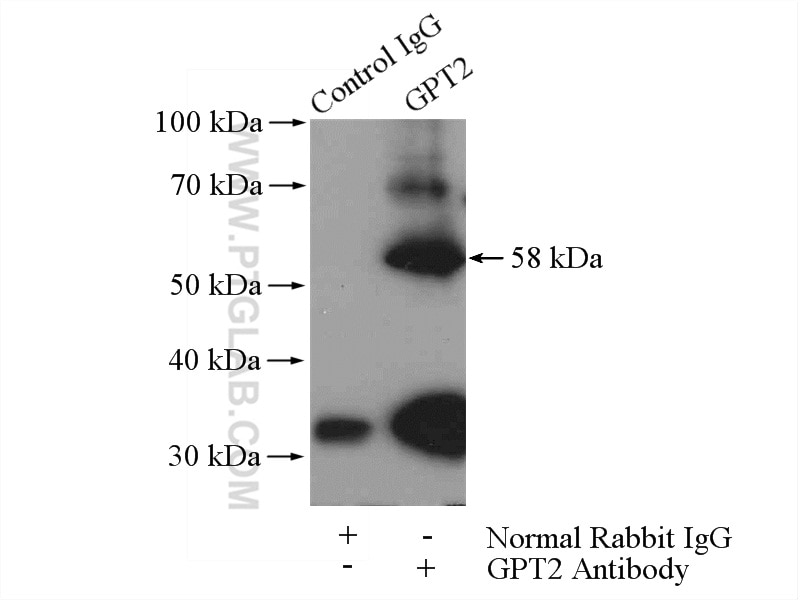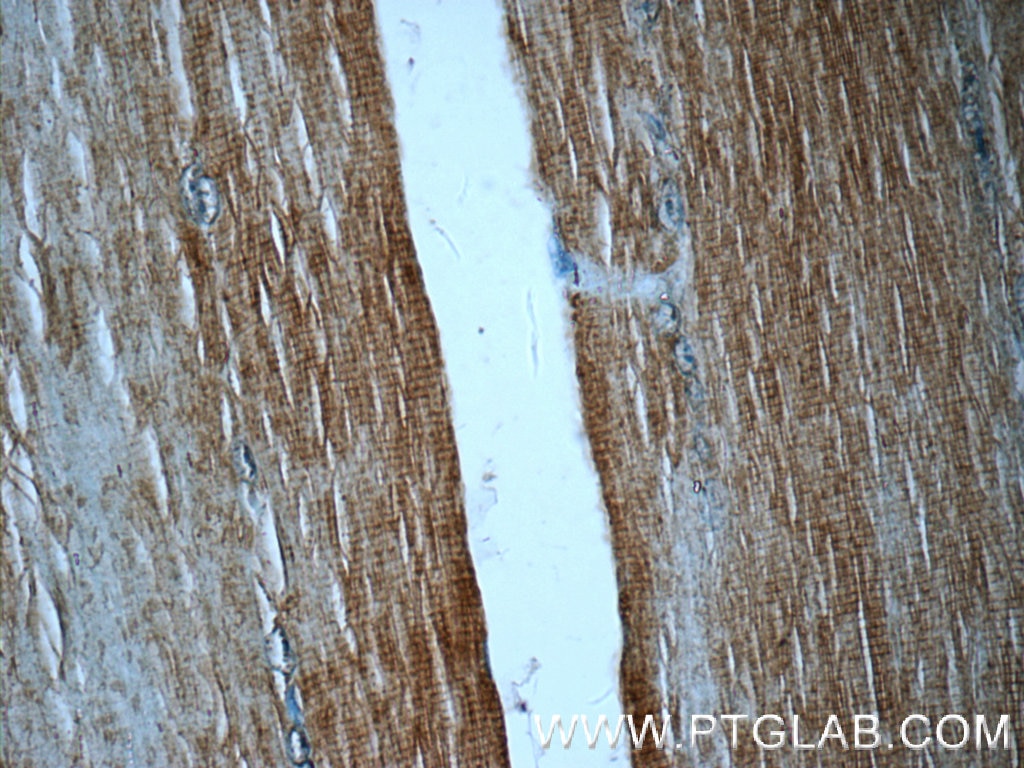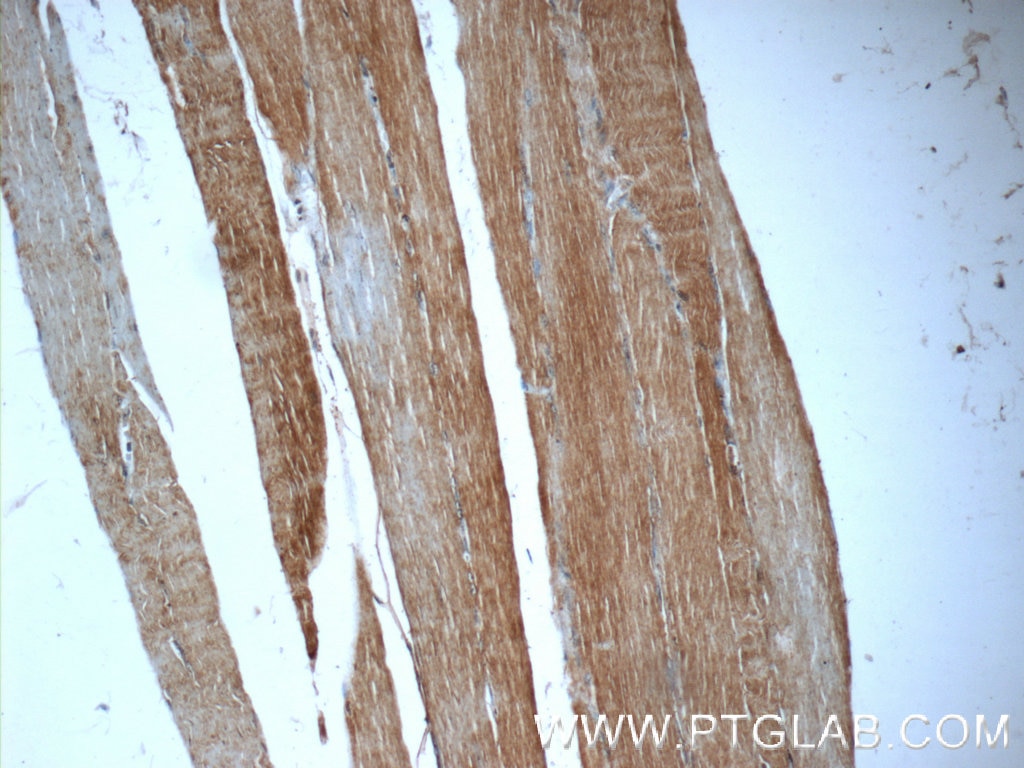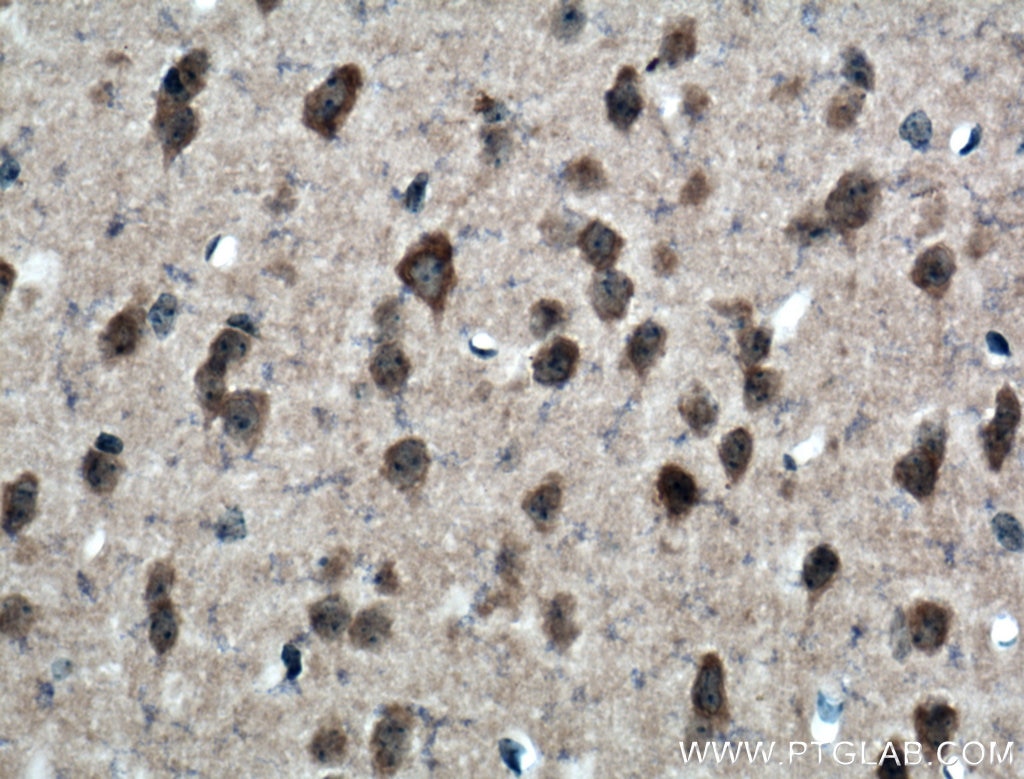Tested Applications
| Positive WB detected in | mouse liver tissue, mouse kidney tissue, HepG2 cells |
| Positive IP detected in | mouse kidney tissue |
| Positive IHC detected in | human skeletal muscle tissue, mouse brain tissue Note: suggested antigen retrieval with TE buffer pH 9.0; (*) Alternatively, antigen retrieval may be performed with citrate buffer pH 6.0 |
| Positive IF/ICC detected in | HepG2 cells |
| Positive FC (Intra) detected in | HepG2 cells |
Recommended dilution
| Application | Dilution |
|---|---|
| Western Blot (WB) | WB : 1:500-1:3000 |
| Immunoprecipitation (IP) | IP : 0.5-4.0 ug for 1.0-3.0 mg of total protein lysate |
| Immunohistochemistry (IHC) | IHC : 1:50-1:500 |
| Immunofluorescence (IF)/ICC | IF/ICC : 1:200-1:800 |
| Flow Cytometry (FC) (INTRA) | FC (INTRA) : 0.40 ug per 10^6 cells in a 100 µl suspension |
| It is recommended that this reagent should be titrated in each testing system to obtain optimal results. | |
| Sample-dependent, Check data in validation data gallery. | |
Published Applications
| KD/KO | See 4 publications below |
| WB | See 31 publications below |
| IHC | See 9 publications below |
| IF | See 5 publications below |
| ELISA | See 1 publications below |
Product Information
16757-1-AP targets GPT2 in WB, IHC, IF/ICC, FC (Intra), IP, ELISA applications and shows reactivity with human, mouse, rat samples.
| Tested Reactivity | human, mouse, rat |
| Cited Reactivity | human, mouse |
| Host / Isotype | Rabbit / IgG |
| Class | Polyclonal |
| Type | Antibody |
| Immunogen |
CatNo: Ag10273 Product name: Recombinant human GPT2 protein Source: e coli.-derived, PGEX-4T Tag: GST Domain: 174-523 aa of BC062555 Sequence: VPADPDNIYLTTGASDGISTILKILVSGGGKSRTGVMIPIPQYPLYSAVISELDAIQVNYYLDEENCWALNVNELRRAVQEAKDHCDPKVLCIINPGNPTGQVQSRKCIEDVIHFAWEEKLFLLADEVYQDNVYSPDCRFHSFKKVLYEMGPEYSSNVELASFHSTSKGYMGECGYRGGYMEVINLHPEIKGQLVKLLSVRLCPPVSGQAAMDIVVNPPVAGEESFEQFSREKESVLGNLAKKAKLTEDLFNQVPGIHCNPLQGAMYAFPRIFIPAKAVEAAQAHQMAPDMFYCMKLLEETGICVVPGSGFGQREGTYHFRMTILPPVEKLKTVLQKVKDFHINFLEKYA Predict reactive species |
| Full Name | glutamic pyruvate transaminase (alanine aminotransferase) 2 |
| Calculated Molecular Weight | 523 aa, 58 kDa |
| Observed Molecular Weight | 58 kDa, 47 kDa |
| GenBank Accession Number | BC062555 |
| Gene Symbol | GPT2 |
| Gene ID (NCBI) | 84706 |
| RRID | AB_2112098 |
| Conjugate | Unconjugated |
| Form | Liquid |
| Purification Method | Antigen affinity purification |
| UNIPROT ID | Q8TD30 |
| Storage Buffer | PBS with 0.02% sodium azide and 50% glycerol, pH 7.3. |
| Storage Conditions | Store at -20°C. Stable for one year after shipment. Aliquoting is unnecessary for -20oC storage. 20ul sizes contain 0.1% BSA. |
Background Information
GPT2 (Alanine aminotransferase 2; ALT2) is a key enzyme in intermediatary metabolism, catalysing the reversible transfer of the amino group of glutamate to pyruvate, yielding alanine and ketoglutarate. GPT2 protein localizes to mitochondria, and is mainly expressed in the pancreas, brain, adrenal gland, skeletal muscle and heart. Serum GPT2 is a useful marker for liver damage. Recently mutation of GPT2 has been reported to be a cause of neural disorder (27601654). 16757-1-AP antibody recognizes two different isoforms of GPT2 protein.
Protocols
| Product Specific Protocols | |
|---|---|
| FC protocol for GPT2 antibody 16757-1-AP | Download protocol |
| IF protocol for GPT2 antibody 16757-1-AP | Download protocol |
| IHC protocol for GPT2 antibody 16757-1-AP | Download protocol |
| IP protocol for GPT2 antibody 16757-1-AP | Download protocol |
| WB protocol for GPT2 antibody 16757-1-AP | Download protocol |
| Standard Protocols | |
|---|---|
| Click here to view our Standard Protocols |
Publications
| Species | Application | Title |
|---|---|---|
Cancer Discov Selective Alanine Transporter Utilization Creates a Targetable Metabolic Niche in Pancreatic Cancer. | ||
Cell Metab Rewiring of Glutamine Metabolism Is a Bioenergetic Adaptation of Human Cells with Mitochondrial DNA Mutations. | ||
Cell Res Glutaminase GLS1 senses glutamine availability in a non-enzymatic manner triggering mitochondrial fusion.
| ||
Nat Commun Sirtuin5 contributes to colorectal carcinogenesis by enhancing glutaminolysis in a deglutarylation-dependent manner. | ||
Cancer Res Targeting BCAT1 combined with α-ketoglutarate triggers metabolic synthetic lethality in glioblastoma. |






















